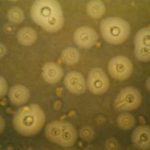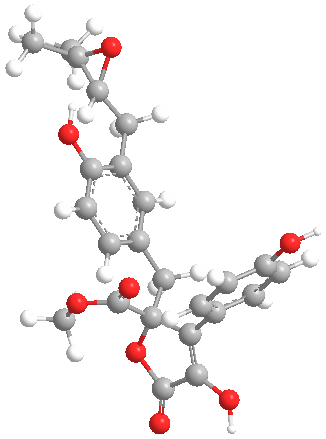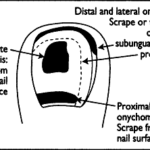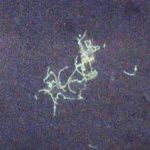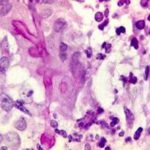Date: 26 November 2013
Secondary metabolites, 3D structure: Trivial name – Butyrolactone III
Copyright: n/a
Notes:
Species: A. terreusSystematic name: 2-Furancarboxylic acid, 2-[[3-[(3,3-dimethyloxiranyl)methyl]-4-hydroxyphenyl]methyl]-2,5-dihydro-4-hydroxy-3-(4-hydroxyphenyl)-5-oxo-, methyl ester, (2R)-Molecular formulae: C24H24O8Molecular weight: 440Chemical abstracts number: 87414-45-7Selected references: Rao, K. V.; Sadhukhan, A. K.; Veerender, M.; Ravikumar, V.; Mohan, E. V. S.; Dhanvantri, S. D.; Sitaramkumar, M.; Babu, J. Moses; Vyas, K.; Reddy, G. Om (CORPORATE SOURCE Dr. Reddy’s Research Foundation, Hyderabad 500 050, India). SOURCE Chem. Pharm. Bul
Images library
-
Title
Legend
-
BAL specimen showing hyaline, septate hyphae consistent with Aspergillus, stained with Blankophor
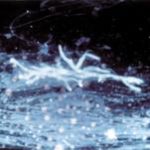
-
Mucous plug examined by light microscopy with KOH, showing a network of hyaline branching hyphae typical of Aspergillus, from a patient with ABPA.
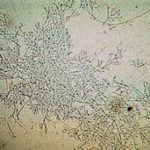
-
Corneal scraping stained with lactophenol cotton blue showing beaded septate hyphae not typical of either Fusarium spp or Aspergillus spp, being more consistent with a dematiceous (ie brown coloured) fungus
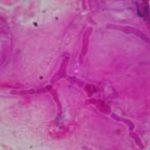
-
Corneal scrape with lactophenol cotton blue shows separate hyphae with Fusarium spp or Aspergillus spp.
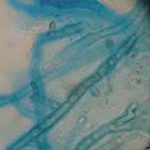
-
A filamentous fungus in the CSF of a patient with meningitis that grew Candida albicans in culture subsequently.
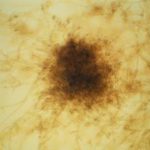
-
Transmission electron micrograph of a C. neoformans cell seen in CSF in an AIDS patients with remarkably little capsule present. These cells may be mistaken for lymphocytes.
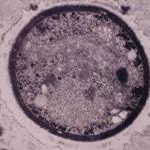
-
India ink preparation of CSF showing multiple yeasts with large capsules, and narrow buds to smaller daughter cells, typical of C. neoformans
